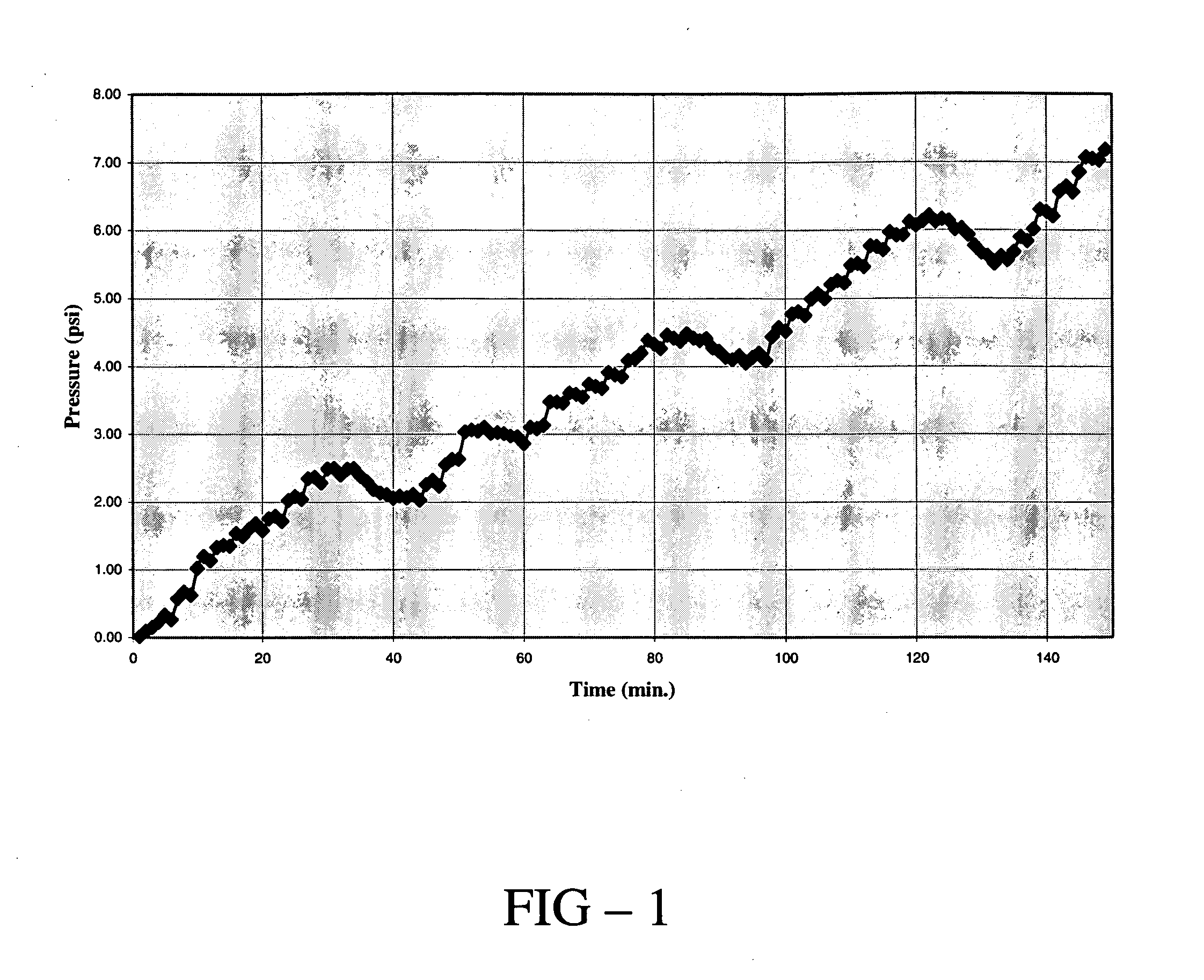Base-facilitated production of hydrogen from biomass
a technology of biomass and hydrogen gas, which is applied in the direction of combustible gas production, products, electrolysis components, etc., can solve the problems of escalating costs, destabilizing economies as well as the likelihood, and increasing consumption of fossil fuels. , to achieve the effect of improving the thermodynamic spontaneity of production
- Summary
- Abstract
- Description
- Claims
- Application Information
AI Technical Summary
Benefits of technology
Problems solved by technology
Method used
Image
Examples
example 1
[0047] In this example, the production of hydrogen from a base-facilitated reaction of glucose (C6H12O12) is demonstrated. 75 g of glucose was combined with 145 g of sodium hydroxide (NaOH), 125 mL of water and a commercial catalyst (20% Pt on C supported on a silver-plated nickel screen) in a 1 L round bottom flask. The flask was sealed and equipped with a pressure gauge. The temperature of the flask was raised to 115° C. and the gas pressure in the headspace of the flask was measured as a function of time.
[0048] The results of the experiment are shown in FIG. 1 herein where the gauge pressure in psi is reported as a function of reaction time. The results indicate that a steady increase in the pressure of the gas contained in the headspace of the flask occurred with increasing reaction time. After 150 minutes of reaction, an aliquot of the gas produced was analyzed with gas chromatography and was determined to be hydrogen gas.
[0049] The results of this experiment indicate that hy...
PUM
| Property | Measurement | Unit |
|---|---|---|
| temperature | aaaaa | aaaaa |
| temperature | aaaaa | aaaaa |
| temperature | aaaaa | aaaaa |
Abstract
Description
Claims
Application Information
 Login to View More
Login to View More - R&D
- Intellectual Property
- Life Sciences
- Materials
- Tech Scout
- Unparalleled Data Quality
- Higher Quality Content
- 60% Fewer Hallucinations
Browse by: Latest US Patents, China's latest patents, Technical Efficacy Thesaurus, Application Domain, Technology Topic, Popular Technical Reports.
© 2025 PatSnap. All rights reserved.Legal|Privacy policy|Modern Slavery Act Transparency Statement|Sitemap|About US| Contact US: help@patsnap.com


